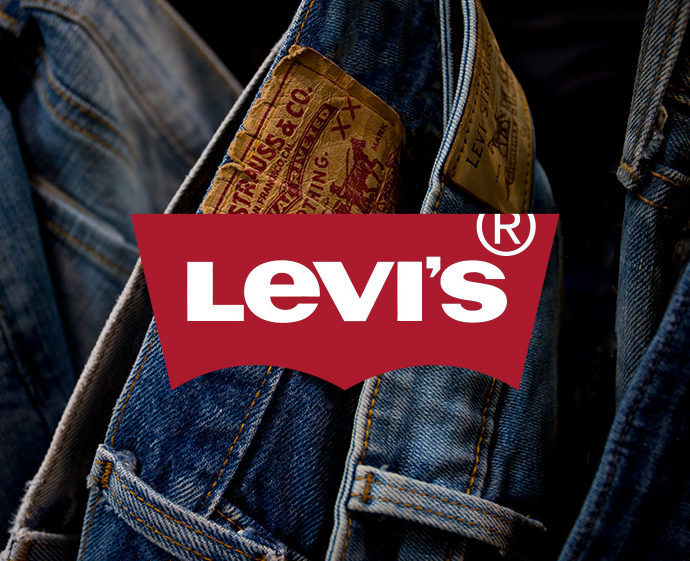Levi’s: A Timeless Case Study on Brand Resilience and Innovation
Levi’s, a brand synonymous with denim, has etched its name in the annals of fashion history. From its humble beginnings as a workwear brand to becoming a global icon, Levi’s has demonstrated unparalleled resilience and innovation. This case study delves into the brand’s journey, strategies, and the lessons that businesses can learn from Levi’s.
1. Historical Background
Levi Strauss & Co. was founded in 1853 by Levi Strauss, a German immigrant who saw an opportunity to create durable workwear for miners during the California Gold Rush. The invention of the first blue jeans in 1873, with the help of tailor Jacob Davis, revolutionized workwear. The 501® jeans, introduced in 1890, became an iconic product, symbolizing the ruggedness and durability of the brand.
2. Levi’s Brand Evolution
Over the years, Levi’s has evolved from a functional workwear brand to a symbol of youth culture and rebellion. The brand’s ability to adapt to changing fashion trends while maintaining its core values has been a key factor in its longevity. The 1960s and 1970s saw Levi’s jeans become a staple of counterculture, worn by musicians, activists, and artists who wanted to make a statement.
3. Marketing and Branding Strategies
Levi’s marketing strategies have played a crucial role in its success. The brand’s emphasis on storytelling, authenticity, and emotional connection with consumers has set it apart. Levi’s has consistently aligned itself with cultural movements, making it more than just a clothing brand.
- Emotional Branding: Levi’s campaigns often evoke a sense of nostalgia and authenticity. The “Go Forth” campaign, launched in 2009, tapped into themes of optimism and resilience, resonating with consumers during the economic downturn.
- Influencer Collaborations: Levi’s has collaborated with celebrities and influencers to maintain its relevance among younger audiences. Collaborations with artists like Justin Timberlake and Virgil Abloh have helped the brand stay fresh and trendy.
- Sustainability Initiatives: In recent years, Levi’s has focused on sustainability, launching the Water<Less® campaign to reduce water usage in production and the Wellthread™ collection made from sustainable materials. These initiatives align with the growing consumer demand for environmentally responsible products.
4. Challenges and How Levi’s Overcame Them
Despite its success, Levi’s has faced its share of challenges. The rise of fast fashion in the late 20th century posed a significant threat to the brand. Consumers were drawn to cheaper, trendier alternatives, leading to a decline in Levi’s market share.
- Brand Revitalization: To combat this, Levi’s undertook a brand revitalization strategy in the early 2000s. The company streamlined its product offerings, focusing on its core products like the 501® jeans. Levi’s also revamped its retail stores to create a more engaging shopping experience.
- Digital Transformation: Recognizing the shift towards e-commerce, Levi’s invested heavily in its digital presence. The brand’s website was redesigned to be more user-friendly, and Levi’s expanded its social media presence, engaging directly with consumers through platforms like Instagram and TikTok.
5. Levi’s Global Expansion
Levi’s global expansion strategy has been instrumental in its growth. The brand has a presence in over 100 countries, with a strong foothold in both developed and emerging markets.
- Adaptation to Local Markets: Levi’s has successfully adapted its products to meet the preferences of local markets. For example, in India, Levi’s introduced the “Slim Fit” jeans to cater to the local demand for slimmer silhouettes.
- Retail Expansion: Levi’s has expanded its retail presence through a mix of company-owned stores, franchisee-operated stores, and partnerships with department stores. The brand’s flagship stores in major cities around the world serve as a showcase for its latest collections and innovations.
6. Financial Performance
Levi’s financial performance has been a testament to its successful strategies. The brand has consistently reported strong revenue growth, driven by its core products and new innovations. The table below provides a snapshot of Levi’s financial performance in recent years:
| Year | Revenue (in Billion USD) | Net Income (in Million USD) | Growth Rate |
|---|---|---|---|
| 2019 | 5.8 | 395 | 3.5% |
| 2020 | 4.5 | 148 | -22.4% |
| 2021 | 5.8 | 553 | 28.9% |
| 2022 | 6.2 | 601 | 6.9% |
Note: The figures above are illustrative and for educational purposes only.
7. Levi’s in the Future
Levi’s future looks promising as the brand continues to innovate and adapt to the changing retail landscape. The focus on sustainability, digital transformation, and tapping into emerging markets will likely drive the brand’s growth in the coming years.
- Sustainability Goals: Levi’s has set ambitious sustainability goals, including using 100% sustainable cotton by 2025 and reducing greenhouse gas emissions by 40% by 2030. These initiatives not only help the environment but also strengthen the brand’s appeal to eco-conscious consumers.
- Technological Innovation: Levi’s is exploring the use of technology in its products, such as smart denim that can interact with smartphones. This could open up new avenues for the brand in the tech-savvy consumer segment.
- Expansion in Emerging Markets: Levi’s plans to continue its expansion in emerging markets like China and India, where the demand for premium denim is growing. By tailoring its products and marketing strategies to these markets, Levi’s aims to capture a larger share of the global denim market.
Conclusion
Levi’s journey from a small workwear company to a global fashion icon is a testament to its resilience, innovation, and ability to adapt to changing market conditions. The brand’s emphasis on authenticity, emotional connection with consumers, and commitment to sustainability have set it apart in the highly competitive fashion industry. As Levi’s continues to evolve, it remains a powerful example of how a brand can stay relevant and thrive for over a century.







